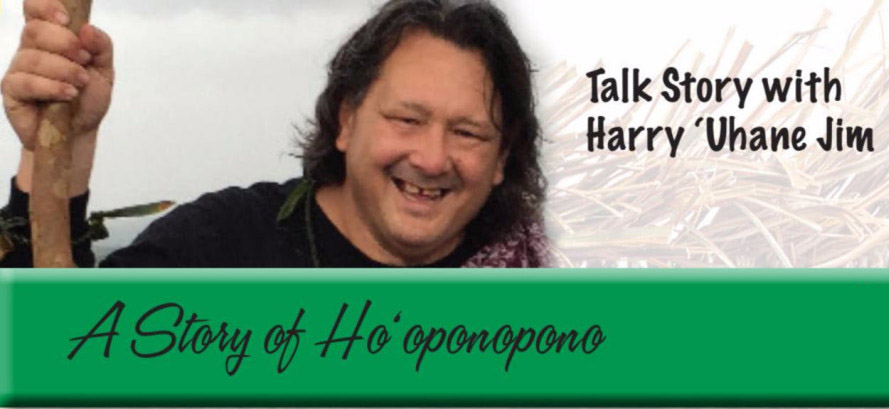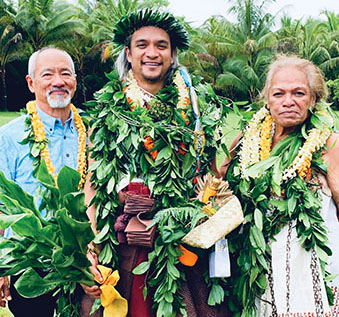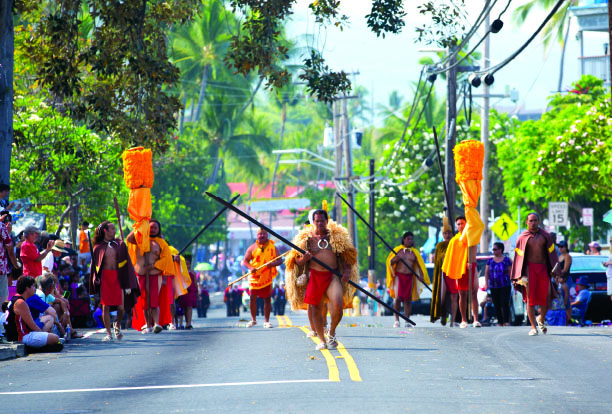
To Celebrate the King: Kamehameha Day and Kamehameha’s Legacy of Aloha
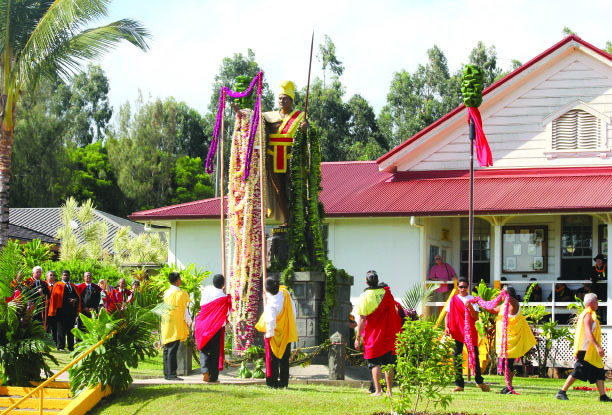
By Jan Wizinowich
Every June 11 the islands celebrate Kamehameha, the Hawai‘i Island warrior chief who changed the course of history in the 18th and 19th century by uniting the Hawaiian Islands, preparing Hawai‘i for the future in a rapidly changing world. “In my opinion he is the greatest Hawaiian who ever lived—not only being the one to unify the islands, but having the vision, the power, the mana and the dedication and loyalty of thousands of Hawaiians who believed in what he did,” said Fred Cachola, historian and member of the Royal Order of Kamehameha I, Moku O Kohala.
When Kamehameha’s mother Keku‘iapoiwa became pregnant, it was prophesied that the baby she was carrying would be a slayer of chiefs. On hearing the prophesy, Hawai‘i Island Chief Alapa‘inui began to plot to kill the infant.
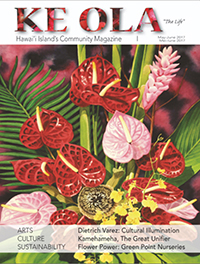
The great warrior Nae‘ole was selected by Keku‘iapoiwa to be the child’s caretaker, and he enlisted the entire Kohala populace in what Fred calls the “grand Kohala conspiracy” to do whatever it took to protect the infant. When Kamehameha was born at Kokoiki, Nae‘ole spirited him away, following a clandestine route to ‘Āwini, an easily defensible plateau three valleys past Pololū.
The events of that journey can be found in the very place names of Kohala. Stories point out names like Hō‘ea, which means to arrive, to take first breaths. When baby Kamehameha arrives at Hāwī, the breath of hunger, the wet nurse isn’t there. Kapa‘au, with its many streams, had to be traversed and his kapa cloth got wet moving through the water.
Kamehameha is well known for the Herculean task of unifying the islands. But after unity and peace had been attained, Kamehameha set a standard for leadership whose guiding principle was the well-being of the people.
“These ali‘i were what we would call today ‘servant leaders,’ and they probably served more than they led. They saw service and leadership as companion qualities that they had to have. They saw the two as very integral in creating a state that I would call pono (right/balanced),” said Fred.
Following Kamehameha’s death in Kona in 1819, western influences continued to bombard the Kingdom of Hawai‘i. Alarmed by rapid changes, Kamehameha V (Lot Kapuāiwa) established the Royal Order of Kamehameha I in 1865 to commemorate his grandfather. Then in 1871, he established Kamehameha Day, a celebration in honor of Kamehameha I’s accomplishments and contributions to the kingdom.
History of the Celebrations
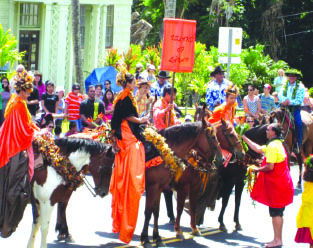
The first celebration took place in 1872 and was a day of festivities of all sorts. “Early celebrations of Kamehameha Day featured carnivals, fairs, and lots of racing—foot races, horse races and even velocipede races. Accounts in the newspapers of the day counted over 4,000 people at Kapi‘olani Park in Waikīkī. Kalākaua and Kapi‘olani were in attendance.
After the overthrow of the monarchy and the rapid changes that followed, Kamehameha Day celebrations were subdued. Then in 1914, a Kamehameha Day Celebration Committee was formed and the day was celebrated with much of the old grandeur.
The 1916 annual Chamber of Commerce of Honolulu publication described that year’s celebration in Honolulu as beginning with a parade from ‘A‘ala Park to the statue in front of Ali‘iōlani Hale for lei draping and the singing of Hawai‘i Pono‘ī. The parade then proceeded to ‘Iolani Palace, the capitol of the territory at the time. The festivities also opened and closed with horse races in Kapi‘olani Park. Kamehameha Day celebrations continued and became one of the first official holidays declared when Hawai‘i became a state in 1959.
To Celebrate the King
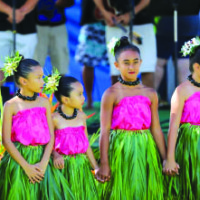
Kohala, Hilo and Kona are the three Royal Order moku (districts) on Hawai‘i Island and each will host a celebration on or around Kamehameha Day. Each moku represents a different phase of Kamehameha’s life.
Kohala, Kamehameha’s birth place, has the original statue, in front of the historic courthouse in Kapa‘au. Originally bound for Honolulu, the statue was lost at sea when the ship carrying it sank in Port Stanley in the Falkland Islands. It was eventually recovered in 1882 by Captain Jervis, who spotted the statue in front of a store while strolling around Port Stanley. He purchased it and brought it to Honolulu.
A replacement statue was already underway and plans were made to install the first statue in Kohala at the school house in ‘Āinakea on May 8, 1883. Kalākaua and an honor guard of 118 men arrived in Kohala for two days of festivities around the unveiling. On May 7, the Royal Hawaiian Band enlivened the neighborhood with song and in the evening presented a concert. The statue unveiling took place the next day at 3pm, with many admirers placing lei at the foot of the statue as the band played Hawai‘i Pono‘ī.
Every year since that unveiling, there has been a Kamehameha Day celebration in Kohala on June 11. This year’s celebration will start with the lei draping ceremony at 7:45am, opening with a blessing, which is followed by hula and music. The parade, which begins at 10am, will have a number of floats, hālau hula (hula school), and a special pā‘ū unit (horseback riders) of Kahua Ranch reunion honorees. “The community of Kohala is very involved in the Kamehameha Day celebration. People line the street all the way from Hō‘ea,” said Ski Kwiatkowski, Royal Order of Kamehameha Moku O Kohala member.
The parade ends at Kamehameha Park where there is a ho‘olaule‘a (celebration), including Makahiki games, hula, music and other entertainment. “The Royal Order has an awesome display of all of Kamehameha’s life, from birth to death and everything in between. There are markers for the places that Nae‘ole took the baby,” said Ski.
Hilo: Kamehameha’s War Years
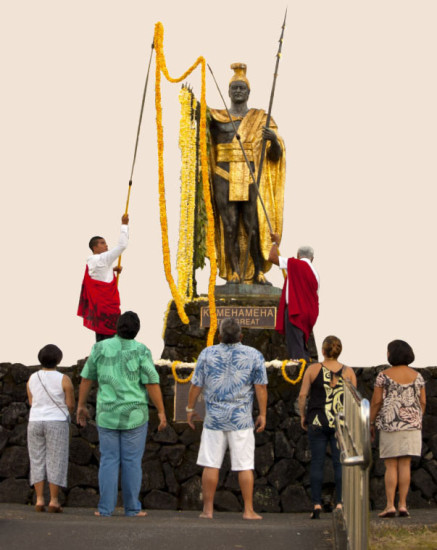
Although Kamehameha spent his early years in Kohala, it was in Hilo that he confirmed prophesies by lifting the 7,000-pound Naha Stone, enlisted warriors, and launched war canoes in his endeavor to unify the islands.
The Hilo chapter of the Royal Order of Kamehameha I was given the name Māmalahoa by Prince Jonah Kūhiō and while the name refers to Kamehameha’s law of protection for all people, it also refers to Kamehameha’s personal guardians. This elite unit of warriors were recognized for their skill and courage in battle, and respected for their honor and loyalty to Kamehameha. “This kaona inoa (double meaning name) was chosen by Prince Jonah Kūhiō to inspire the members of Māmalahoa to imua (move forward) and ho‘omau (persevere) in their cause as modern day warriors,” said Lani Ali‘i, Sir Pua Ishibashi. The well being of all people was at the heart of Kamehameha’s rule and continues to be perpetuated through the work of the Royal Order of Kamehameha I.
The Kamehameha Festival has been celebrated in Hilo since 1908 and since 1985, has taken place on Moku Ola (Island of Life) in Hilo Bay. It is a day of sharing the richness of all aspects of the Hawaiian culture, including hula (dance), mele (music), oli (chant), and arts and crafts.
The festivities will begin at 10am with the opening ceremony taking place at noon. The Royal Order of Kamehameha I Māmalahoa is joined by other royal societies and proceeds from Lili‘uokalani Park across the foot bridge to Mokuola, to pay tribute to Kamehameha with a blessing and ho‘okupu. The theme for this year’s celebration, which will take place on Sunday June 11, is “‘Onipa‘a” (to move forward and be steadfast), a tribute to the 100th year of the passing of Queen Lili‘uokalani.

Kona: Kamehameha’s Ancestral Homeland and Final Dwelling Place
Kamehameha I, whose mother Keku‘iapoiwa was the daughter of Kona Ali‘i Kekelaokalani, established the first capital of the united Hawaiian Kingdom in Kailua-Kona. After unification, Kamehameha went to work to ensure peace and the prosperity of all people of Hawai‘i. He understood that agriculture was key to this and the field systems he worked to create serves as inspiration to farmers until today.
The first Kamehameha Day celebration in Kona was early in the 20th century. “I know early in the 1900s there was a celebration where they came ashore on canoes and marched down Ali‘i drive past [Hulihe‘e] Palace,” said Barbara Nobriga, parade committee chair.
After that there wasn’t another Kamehameha Day celebration in Kona until 1953. Barbara was just a teenager then. “In 1953 they actually had a full on pā‘ū parade. Then they didn’t have another one until 1967,” said Barbara.
At the heart of the Kona Kamehameha Day celebration is a parade with a full compliment of pā‘ū riders, reflecting the paniolo spirit of the district. “If you don’t have that full pā‘ū section on Kamehameha Day, you do not have a parade,” said Barbara.
The parade will begin at the Royal Kona Resort at 9am on Saturday, June 10, led by the Royal Order of Kamehameha I, Moku O Kona and followed by the Pā‘ū Queen leading riders representing the eight main Hawaiian Islands. Each group, headed by their princess, is draped in flowing satin and velvet and stunning lei displaying the color of their island.
The parade will also feature hālau hula, equestrian units, marching bands, a horse-drawn carriage, and more. The day will also feature a ho‘olaule‘a at Hulihe‘e Palace after the parade, with music by top Hawaiian musicians.
The celebration is a reflection of unity and service, virtues that Kamehameha perpetuated in the life of the islands. “What we look for in the Grand Marshall and the Queen are people who do something to give back to the community. It takes a village to raise a child and it takes a village to put this parade together. It’s a community parade and without the community behind you, you wouldn’t get it off the ground,” said Barbara.
When we celebrate Kamehameha Day, we are rejoicing in Kamehameha’s immense efforts to create a healthy, unified Hawaiian Kingdom. ❖
